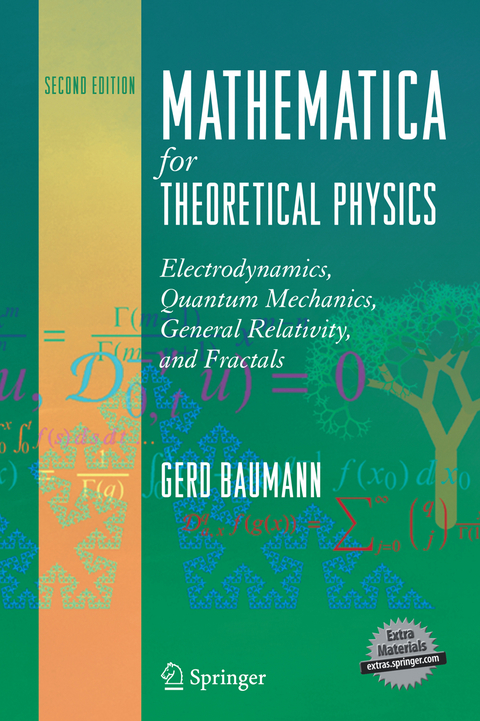
Mathematica for Theoretical Physics
Springer-Verlag New York Inc.
978-0-387-21933-2 (ISBN)
As physicists, mathematicians or engineers, we are all involved with mathematical calculations in our everyday work. Most of the laborious, complicated, and time-consuming calculations have to be done over and over again if we want to check the validity of our assumptions and derive new phenomena from changing models. Even in the age of computers, we often use paper and pencil to do our calculations. However, computer programs like Mathematica have revolutionized our working methods. Mathematica not only supports popular numerical calculations but also enables us to do exact analytical calculations by computer. Once we know the analytical representations of physical phenomena, we are able to use Mathematica to create graphical representations of these relations. Days of calculations by hand have shrunk to minutes by using Mathematica. Results can be verified within a few seconds, a task that took hours if not days in the past. The present text uses Mathematica as a tool to discuss andto solve examples from physics. The intention of this book is to demonstrate the usefulness of Mathematica in everyday applications. We will not give a complete description of its syntax but demonstrate by examples the use of its language. In particular, we show how this modern tool is used to solve classical problems. viii Preface This second edition of Mathematica in Theoretical Physics seeks to prevent the objectives and emphasis of the previous edition.
The Author, Gerd Baumann, is affiliated with the Mathematical Physics Division of the University of Ulm, Germany, where he is professor. He is the author of Symmetry Analysis of Differential Equations with Mathematica®. Dr. Baumann has given numerous invited talks at universities and industry alike. He regularly hosts seminars and lectures on symbolic computing at the University of Ulm and at TECHNISCHE UNIVERSITÄT MÜNCHEN (TUM), Munich.
Preface - Electrodynamics: Introduction.- Potential and Electric Field of Discrete Charge Distributions.- Boundary Problem of Electrostatics.- Two Ions in the Penning Trap.- Exercises.- Packages and Programs - Quantum Mechanics: Introduction.- The Schrödinger Equation.- One Dimensional Potential.- The Harmonic Oscillator.- Anharmonic Oscillator.- Motion in the Central Force Field.- Second Virial Coefficient and Its Quantum Corrections.- Exercises.- Packages and Programs - General Relativity: Introduction.- The Orbits in General Relativity.- Light Bending in the Gravitational Field.- Einstein's Field Equations (Vacuum Case).- The Schwarzschild Solution.- The Reissner-Nordstrom Solution for a Charged Mass Point.- Exercises.- Packages and Programs - Fractals: Introduction.- Measuring a Borderline.- The Koch Curve.- Multi-Fractals.- The Renormalization Group.- Fractional Calculus.- Exercises.- Packages and Programs - Appendix - Index.
From the reviews of the second edition:"The new edition contains a lot of additional material and new examples, and more emphasis is put on an interactive problem solving. In particular, advantage is taken of many special functions and frequently used operations which are available in Mathematica, in order to demonstrate how Mathematica can be used to replace lengthy ‘by-hand’ calculations and to give graphical support." (M. Plum, Zentralblatt MATH, Vol. 1095 (21), 2006)
| Zusatzinfo | XVI, 400 p. |
|---|---|
| Verlagsort | New York, NY |
| Sprache | englisch |
| Maße | 155 x 235 mm |
| Themenwelt | Naturwissenschaften ► Physik / Astronomie ► Allgemeines / Lexika |
| Naturwissenschaften ► Physik / Astronomie ► Theoretische Physik | |
| ISBN-10 | 0-387-21933-1 / 0387219331 |
| ISBN-13 | 978-0-387-21933-2 / 9780387219332 |
| Zustand | Neuware |
| Informationen gemäß Produktsicherheitsverordnung (GPSR) | |
| Haben Sie eine Frage zum Produkt? |
aus dem Bereich



